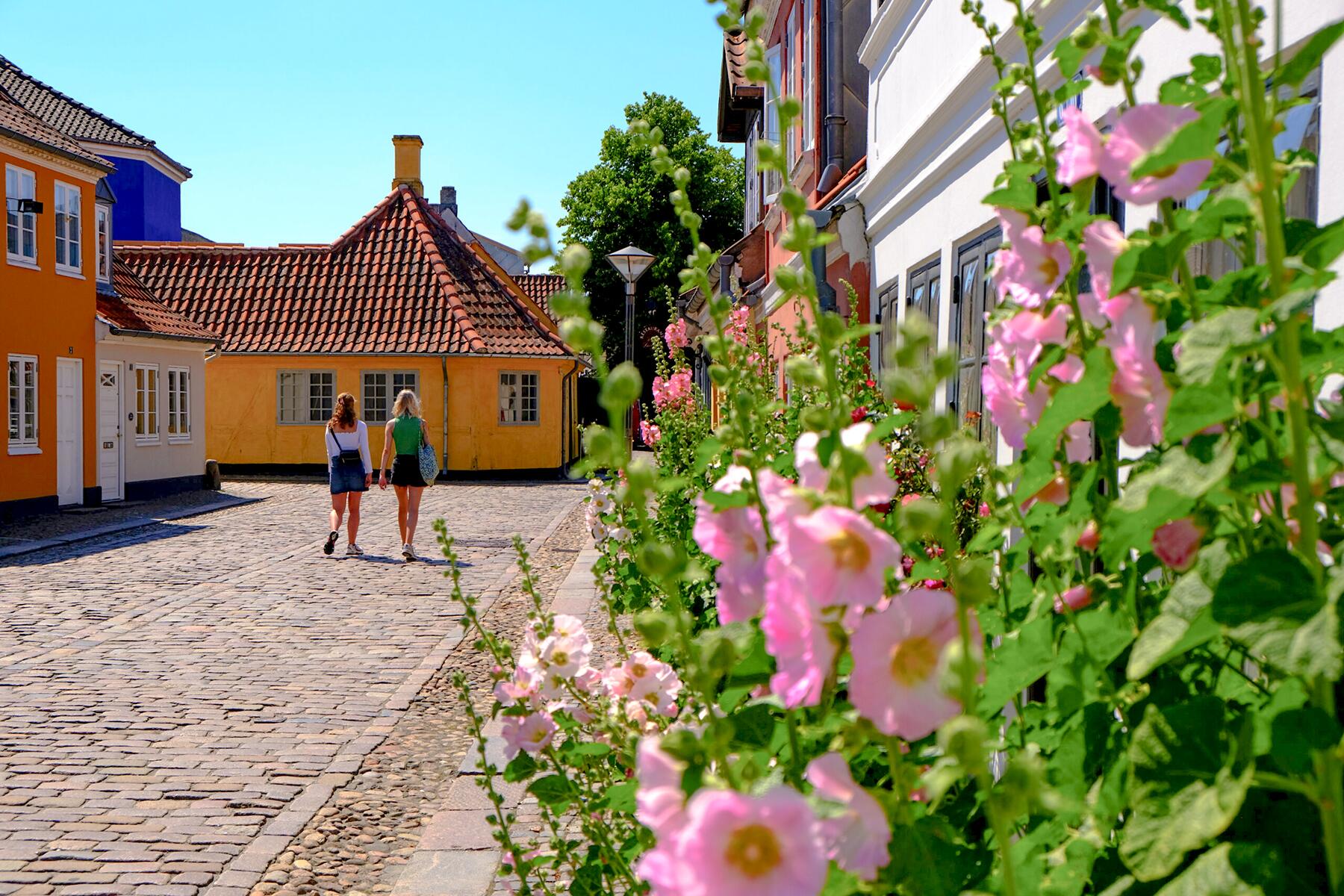In the town of Odense, a new interactive museum pays homage to author Hans Christian Andersen and his whimsical legacy.
“This will all be ready for the Queen tomorrow!” Niels Bjørn Friis’s proclamation sounded like it was coming from a breathless servant in some fairy tale. But in real-life Denmark, real-life workers were buzzing around the dusty cobblestone streets of the pedestrian town of Odense, preparing for a very real-life queen to arrive in fewer than 24 hours.
I strained to imagine this being fit for royalty in time, but the only option for the many people involved with the new H.C. Andersen House—the exhibition’s curator, Mr. Friis, among them—is for everyone to live happily ever after.

The bustling scene was a stone’s throw from a quiet one-story cottage, the childhood home of Hans Christian Andersen, wunderkind author of beloved fairy tales including The Little Mermaid, The Princess and the Pea, and The Emperor’s New Clothes. While the street today is a charming curve of perky yellow and orange thatched-roofed dwellings, in his time, this was the dregs. The Andersens’ roof was made of cloth, the floors little more than packed dirt.
Recommended Fodor’s Video
Now, his hometown of Odense on the Danish island of Funen is unveiling the H.C. Andersen House, a $62 million swirling dream of interactive museum, curious garden, and public park. The esteemed Japanese architect Kengo Kuma was enlisted to design the venue over nearly one and a half acres—a sizeable space for a small European town. When I visited in late June, a day before Queen Margrethe II was slated for her tour, the paint on the walls was not yet dry and feeble saplings were being hastily placed in rows of soil. It was clear, nonetheless, that this paean to this country’s most celebrated creative mind would soon evolve into a wild wonderland.
Throughout his life, Andersen toyed with realities and perceptions—both personal and societal. He is credited with saying, “It is out of reality that the most peculiar tale of all is born.” Because of his unique sensibilities and approach to life, the experience at this museum is unlike any other, creative director Henrik Lübker asserts. “How you navigate and use of objects is not just passive. Normally, you have the voice of the curator everywhere. In Andersen’s universe, there are different voices that claim to have the truth. It’s up to you to find meaning in that. Meaning is something that you create.”

Inside, visitors interact in different ways with objects like eggs, reading glasses, trees, suitcases. You play with what these things are and represent. There are audio voice-overs and visual projections that add layers of intrigue and dimension to story scenes, challenging what you may have thought of them before giving them a second look (or listen).
The magical technology of the museum’s design includes cutting-edge digital tracking that will allow objects, such as, say, a seashell, to “know” when a visitor is as close as 10 centimeters and speak to him or her directly. “We don’t want to portray the natural world in a real way,” says curator Nils-Bjorn Friis. “Because that’s not fun.”

Not considered an attractive man by 19th-century Danish standards, Andersen learned to toy with identity and external presentation. In his infamous tale The Ugly Duckling he wrote, “His own image; no longer a dark, gray bird, ugly and disagreeable to look at, but a graceful and beautiful swan. To be born in a duck’s nest, in a farmyard, is of no consequence to a bird, if it is hatched from a swan’s egg.”
Although he was born the grindingly poor son of a cobbler, during his lifetime Andersen reinvented himself to become a globetrotting bon vivant. He became friends with stars of the era including Charles Dickens, Felix Mendelssohn, and Johann Strauss. He traveled the world for nine years, which was no small feat in a time before airplanes.
“We don’t want to portray the natural world in a real way,” says curator Nils-Bjorn Friis. “Because that’s not fun.”
He struck out of his “duck’s nest” in Odense at age 14 and fled to the city of Copenhagen. His dream was to be an actor or a dancer, not a writer. “His biggest fear was to be known as just a children’s author,” Friis explains. While Andersen never found fame in the performing arts, he, of course, became a celebrated author of children’s fairy tales but also was a well-regarded playwright, novelist, and poet.
A relatively lost craft today, papercutting was a popular tradition in Western Europe, and Andersen was also gifted in this art. Not surprisingly, his style of cuttings was whimsical and intricate, tiny worlds unto themselves. The papercutting motif is interwoven throughout the museum, and many of his original works are carefully preserved under glass.
No longer a poor community, modern-day Odense today has much to offer a visitor. Today, Andersen’s bright yellow childhood home sits in one of the highest-end neighborhoods of the town. Similar history houses have also been meticulously restored along the cobblestone streets. Hollyhocks and roses bloom in the summer months, creating a little fairyland.

The theme of discovery and redemption for the forgotten runs through other parts of the museums beyond the exhibitions. The Danish brewery Mikkeller is creating a special beer for the H.C. Andersen House, appropriately called “Andersen,” using oft-neglected ingredients to craft the custom brew. The gift shop features beloved objects like the famous wooden bird by Danish designer Kay Bojesen, known for rethinking materials, shapes, and the use of objects.
The museum’s restaurant and café are helmed by the renowned Danish chef Claus Meyer (co-founder of Copenhagen’s Noma, considered one of the best restaurants in the world). The new Odense restaurant DEILIG is named after Andersen’s 1860 fairy tale, which roughly translates to “lovely” or “delightful.” Their homage to Andersen is a rotating menu dictated by a kitchen that consistently creates new flavors and has learned to “listen” to what ingredients tell them. The team actively seeks out frequently neglected vegetables or other ingredients and makes them the star of the dish.
From the kitchen to the garden, and everything else in the H.C. Andersen House, the way of walking, looking, planning, and interacting are meant to conjure a new vision of the world, one more fantastic than you ever could have imagined.




